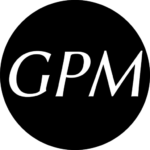Theoretical Rationale
While all first-year writing courses at my institution are designed so that students practice five core writing moves, this course was specifically designed to practice these moves in ways that helped students develop more sophisticated understandings of audience, especially in digital and international contexts. Writing classrooms can be difficult spaces to authentically develop this sort of understanding, since students have typically been encouraged to focus on belletristic aspects of writing over rhetorical and social aspects. However, a substantial body of scholarship supports the idea that community-engaged writing projects are better positioned to help students extend their concepts of audience for their writing beyond the teacher-as evaluator who uses writing primarily as a test of arbitrary skills (Young & Morgan, 2020). Therefore, this course employed digital community-engaged writing projects with nonprofits that included multilingual and international stakeholders.
In addition to helping students design their writing more effectively for international and digital contexts, the course aimed to give students the opportunity to engage the complicated ethics of writing audiences—both by working with organizations that support vulnerable populations and also by considering the ethics of writing in their local educational context, especially the ways that language variation is judged and assessed. These objectives reflected both what I saw as some of the most urgent but neglected issues around writing in college instruction and also the practical concerns of the organizations we partnered with.
Two theoretical orientations strongly influenced the design of this course:
- tactical (Mathieu, 2005), social justice-oriented service learning pedagogies (Gonzales & Butler, 2020).
- translation theories in composition studies (Gonzales, 2018; Horner & Tetreault, 2016), including theories of multimodal translation such as remediation (Prior & Shipka, 2003; Shipka, 2011) and transduction (Bezemer & Kress, 2008).
Below, I describe why these frameworks were chosen and how they were applied through the design of assignments and activities.
Course Structure
The course described here grew around a “writing for the community” (Deans, 2000) assignment that was created using a tactical approach. Tactical community partnerships are, according to Mathieu (2005), “local, specific, responsive, and timely” (p. 114). They assume that the products that come out of such partnerships will be “radically insufficient” in their capacity to address genuine community needs, since they are limited as they are by time and mismatches in goals and expertise. But when expectations are managed properly and the needs of all stakeholders are carefully taken into consideration, they still hope for worthwhile, if limited and often difficult-to-assess, outcomes. A nimble, tactical approach made sense for me, because while sustainable partnerships and programs are often upheld as the ideal for community-based writing, my transient status as a graduate student who would not be teaching the same course in the foreseeable future made true sustainability practically impossible (see Deans, 2013), even if it would have opened up more robust avenues for collaboration.
I had some tactical advantages planning this course in the form of established relationships with members of the nonprofits this course partnered with. I worked with these contacts to sketch out limited projects (projects that could be accomplished in about eight weeks by small groups of untrained students) before the course began. Both community groups identified a need for promotional materials. These materials were “wish list” tasks that there never seemed to be time for that did not have fixed deadlines, but they were timely and responsive. For example, one project described at length in this chapter is a web portal and shareable social media for Project Represent, a newly-inaugurated collaboration between the Neighbor Fund and Quiet Corner Refugee Resettlement. While Project Represent had begun fundraising and providing direct aid already, they didn’t yet have any web presence. These web materials responded to an immediate but specific need to make the new initiative more digitally visible.
The limited and tactical nature of these assignments left space in the course for appropriate scaffolding into and out of the Community Partner Projects. This scaffolding sometimes took the form of readings, mostly taken from the field of writing studies but also including contemporary journalistic texts about translation and immigration issues. Scaffolding also included shorter assignments designed to prepare students for some aspect of the Community Partner Project or reflect on it afterward (see below) as well as low-stakes activities practiced during class meetings or asynchronously outside of these.
Many of these scaffolding activities, discussions, and assignments focused on translation as a unifying theme. There were three main ways we deployed the concept of translation in the class (drawn from Scarpa, 2019):
- Interlingual translation: translating from one language to another. Although students weren’t required to produce content in languages other than English, they were informed that the work they did for the Community Partner Projects would likely need to be translated into Spanish, and so some assignments and activities focused on how to write for translation, or, in the words of Ridolfo and DeVoss (2009) “strategic theorizing for how a text might be recomposed.”
- Intralingual translation: Students acted as translators within one language when they had to transform information about community partners from other documents and conversations into texts for different audiences.
- Intersemiotic translation: Students remediated assignments into new genres for their portfolios; they also had to represent content from their community partner organizations in new ways to work in a different medium.
But there was another way that translation became relevant to learning in this course. Halfway through the semester, the COVID-19 pandemic suspended all in-person class meetings and prompted us to move all classwork, including our work with community partners, exclusively online. From that point on, the norms, practices, and relationships we had constructed together as a class had to be translated to an online medium. I opted to convert most classwork (with the exception of some small group and studio meetings) into an asynchronous format in an attempt to accommodate students’ different technology capabilities and the fact that we no longer shared a common time zone. I had to learn alongside students what it meant to translate material, as many of the activities and timelines I had planned simply no longer worked in the new course format.
Assignments
The seminar portion of this course featured three main assignments, with students also creating a remediation of another assignment and a portfolio website that hosted all their writing as part of the corequisite digital learning studio attached to the seminar. The community engaged writing project that was the center of the course was the final project in the seminar portion of the course, with the two antecedent assignments helping to prepare students for this work. The remediation project and the portfolio website largely served to help students revise, reflect on, and showcase their work afterwards.

The translation project is designed to get you thinking critically about translation as a concept, in addition to preparing you to write with future translations in mind.
The first step will be to translate a text—Vargas and Lieball’s “La Migracion en el Era de Trump“—from Spanish into English using whatever resources you have access to. As you translate, study your translation process. Make note of the tools and techniques you’re using.
Once you have the translation, write a reflection on the translation process that describes what you did and proposes a “theory of translation.” Your reflection should answer the following questions:
- How would you now define translation? What does it mean to translate?
- How is writing an act of translation?
- Based on your experience, what are some important things to consider if you were writing something you knew would be translated for another audience?
Your reflection should use specific moments in your translation text or process to illustrate your theory of translation.
In the first assignment of the course, the translation project, students translate a short article about US immigration from Mexico, Central America, and Latin America from Spanish into English. Since only 3 out of the 15 students in the class had any kind of proficiency with Spanish, students were encouraged to draw on any resources they could think of to complete the translation, including collaborating with each other as well as contacts outside of class, using translation technologies such as Google Translate, and making inferences from multimodal and contextual clues in the text they were translating. The goal of this exercise was not to produce a perfect translation but to gain a better understanding of threshold concepts in translation—e.g., that translation necessitates transformation rather than uncomplicated equivalence (Horner & Tetreault, 2016)—as well as the ways readers access and negotiate texts in unfamiliar languages. After producing the translation, students wrote a reflection on their translation process and were asked to construct a “theory of translation” that attempted to describe what happens when writing is translated from one language/form to another. The frameworks students generated helped students to write texts for community partners that would be targeted to audiences with diverse language and cultural backgrounds.

The purpose of the organization analysis project is to account for the rhetorical work that key genres perform in the context of an organizational system. The work you do here will help prepare you for the Community Partner Project by giving you insight into how your community partner communicates.
Using the Downs, Bickmore, and Kain & Wardle readings as analytic tools, you will create a report that accomplishes the following specific tasks:
- Describe the genre you have been assigned, including its features and its name.
- Name the primary audience for the genre as well as any secondary audiences that might encounter.
- Analyze the work that the genre accomplishes. Genres perform social actions in the world. Sometimes genres do things that aren’t what you might immediately assume from the name of the genre. Show how the genre’s features/conventions are related to its purpose.
- Map the genre system that the genre exists within. Genres often borrow from or interact with other genres, and they usually circulate within the context of an organization’s other genres.
- Analyze the purpose of the organization the genre comes from using all of the organization’s texts as evidence. What change is the organization trying to effect? Who is it trying to influence primarily through its genres?
The second assignment of the course, the organization analysis, guided students through learning about the rhetorical and practices and social contexts of the organization they would be partnering with. The assignment asked students to pay special attention to the genres the organization was already using so that they could better anticipate how their own work would fit into the textual ecosystem. Students completed this analysis, which took the form of a report, individually. However, during the revision process, students were put into the teams they would be working in for the Community Partner Projects and instructed to pool their reports into a textual repository of sorts. They were then told to revise a final report that incorporated the strongest sections from the crowdsourced repository. This gave students an initial glimpse of the kind of polyvocal collaborative writing they would be working on for the remainder of the semester. This revision task was intended to emphasize that organizations don’t oftentimes conceptualize ownership of texts in the same way that academics do and prepare students to recycle content the nonprofits had already created for new purposes and audiences.

The Neighbor Fund needs materials for two important fundraising drives they are working on right now.
DACA: The Neighbor Fund is receiving a flood of DACA renewal requests, and they have decided to move forward with those as a special-funding group. The renewals are $495, and the pace is picking up because DACA recipients are being advised that renewals may not be possible if the Supreme Court repeals the program sometime this spring. The Neighbor Fund would be well-positioned to fund area anticipated all area DACA renewals if we can raise $10,000. The people who would benefit from these funds attend school or reside in Windham/Tolland and are mostly students. The materials needed for this fundraising drive might (depending on your conversation with a Neighbor Fund representative) include digital posters that can be shared through social media, print posters/flyers that can be distributed at events, posts that can be shared over multiple social media channels.
Project Represent: Project Represent is a brand new initiative formed from the partnership of Quiet Corner Refugee Resettlement (affiliated with Storrs Congregational Church) and The Neighbor Fund that aims to raise funds for asylum seekers in the area. Materials needed include shareable social media as well as a web portal that describes the initiative and allows visitors to donate.
The final project of the seminar was the Community Partner Project. The class was split into teams to work on three projects for the nonprofits we partnered with:
- Creating brochures for community distribution
- Launching an Instagram account and creating starter posts for that platform
- Creating a web portal for Project Represent and shareable media to promote Project Represent
Students had a chance to briefly get oriented with these projects, create team charters (Wolfe, 2010), and have brief interactions with representatives from community partners before the outbreak of COVID-19 in the USA suspended in-person instruction for the rest of the semester. From that point on, the class adopted an almost exclusively project-based learning approach, with students working both asynchronously and meeting weekly in synchronous virtual small groups to complete the projects.

Throughout the studio, you will be developing a portfolio website based on work you are revising from your seminar and developing for new contexts.
You will curate projects that were significant to you and represent them digitally. In addition to representing your processes, you will rethink, revisit, and remix your original inquiries from the assignments you select.
In addition to revised assignments, your Learning Portfolio will consist of two components or “artifacts”:
- Remediation Assignment
- Reflective Assignment
Remediation Assignment
You will use one assignment from your seminar and remediate it into either an infographic or a collage, and you will upload it along with the original version of the project to your portfolio website.
Your remix should demonstrate awareness of how changing to a visual, web-based mode will affect your work. An infographic or collage may not be able to do everything your original assignment did. How can you create layers of meaning using images, or a combination of text and image?
Successful remediation assignments will experiment with and deploy visual design principles; carefully curate elements of the original assignment for reuse in new contexts; demonstrate awareness of differences in audience, genre, and context; be accessible to a wide variety of audiences, including captions, links, and citations where needed; ethically make use of sources and assets.
Reflective Assignment
After you’ve selected the assignments you’ll host on your portfolio site, draft a 250-300 word reflection on the curated pieces that addresses the following questions:
- Do you see any consistent interests or values in your writing? How does your writing communicate those interests or values to your audience?
- For each assignment, how did different technologies and practices you employed affect what you created?
Successful portfolios will:
- Include both studio assignments (remediation and reflective assignments)
- Host three projects curated from the seminar
- Engage creatively and intentionally with each assignment prompt
- Make content accessible and interactive
The remediation assignment and portfolio websites were somewhat separated from the other coursework by virtue of their position in the one-credit digital learning studio. For these assignments, students focused on translating their seminar work for a new audience—in this case, peers from their own and other first-year writing sections, who made up the enrollment of the studio.
Image references:
- translate by luca fruzza licensed under CC BY 3.0
- essay by Erik Arndt licensed under CC BY 3.0
- Participation by Vectors Market licensed under CC BY 3.0
- portfolio by Vectorstall, PK, licensed under CC BY 3.0
© Gabriel Morrison, 2021

